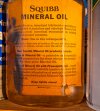ferider
Platinum Member
- Joined
- Jun 20, 2018
- Messages
- 15,067
Do you warm up the metal, let it sit on there for a few minutes then wipe off the excess? Never had problems with mine getting sticky.
I wipe off the excess. What I mean with sticky: I used to use it on folder blades but after several months of storage, Frog-lube doesn't stick to your fingers, but is quite hard to clean off.



